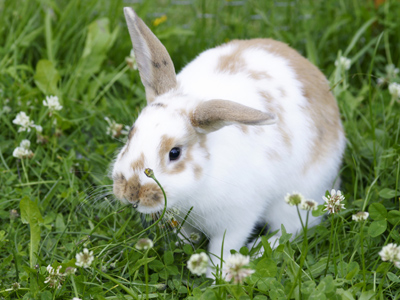Have you ever picked up a piece of food and wondered what might be in it? No food is completely just the food. For example, look at a banana. If the banana was not organically grown, chances are pretty high that the banana was sprayed with insecticide. The insecticide then seeps through the skin into the meat of the banana. When you peel a banana you might like to believe that all that is there is the well protected fruit but that fruit is filled with insecticides that contain all kinds of poisons. However, the amount of poison is far too small to adversely affect most humans.
But that is simply what man can do to a food source. Nature also has its own line of manipulation of the food sources we readily consume every day. This is because food goes through a food chain.
A food chain is the sequence of who eats what or whom in a biological community (or ecosystem) in order to obtain nutrition.
The food chain always starts with the primary energy source such as the sun. Next in the chain comes organisms that make their own food by consuming the primary source. As an example, plants make their own food from sunlight through a process called photosynthesis. Chemosynthetic bacteria make their own food energy by consuming chemicals in hydrothermal vents. Both plants and bacteria are autotrophs or primary producers.
After the autotrophs you have the next link in the food chain and that includes herbivores. Herbivores are the primary consumers and they include anything that eats grass or plants. For example, a grasshopper is an herbivore as is a rabbit.
The next link in the food chain are the secondary consumers. Secondary consumers are carnivores (i.e., they eat meat), as well as omnivores (i.e., animals that will eat both plants and animals). Secondary consumers are those things that eat primary consumers. For example, a mouse would eat a grasshopper making the mouse a secondary consumer.
Next comes the tertiary consumer. A tertiary consumer eats secondary consumers. As an example, a snake will eat a mouse. This makes a snake higher up on the food chain. In each consumer level there is a hierarchy of consumers, meaning that consumers on the lower level of the consumer chain can and will be eaten by consumers on the higher level of the chains. For example, the snake is a tertiary consumer but so is an owl. Owls eat snakes because owls are in the higher level of the tertiary consumer chain.
Next is the quaternary consumer. Quaternary consumers eat tertiary consumers. An example of a quaternary consumer is a hawk because a hawk will eat an owl.
Man is also a quaternary consumer but man is also a secondary consumer as man is an omnivore. In fact, many animals, depending upon what they are consuming at any given moment, can pass from one consumer level to another. In addition, man is not the top predator as some animals will eat man if allowed to. For example, a lion is a secondary consumer and is an omnivore but a lion will also eat a man and a man will eat a lion.
So looking at our consumers we have the plant and bacteria (primary producers) that were eaten by a grasshopper and the grasshopper was eaten by a mouse and the mouse was eaten by a snake and the snake was eaten by an owl and the owl was eaten by the hawk – and there you have your food chain! At least in this chain we can see what is going on. However, there is also the processed food chain that we must deal with.
Did you know that when you eat certain foods, besides the banana and other fruits and vegetables that are sprayed with insecticides, that you are also eating insect parts and rodent hairs. Yuk – it makes you not want to eat anything doesn’t it? However, it is a fact of life as it is virtually impossible to keep insects and rodent hairs out of food processing centers. The Food and Drug Administration (FDA) has set some guidelines on the quantities of “natural contaminants” that processed foods can have. Below is a small sampling of FDA guidelines that will get you to thinking.
FDA GUIDELINES FOR INSECT FRAGMENTS AND RODENT HAIRS IN PROCESSED FOODS
Chocolate – for every 100 grams of chocolate there are upwards to 60 or more insect fragments and 1 to 3 rodent hairs.
Canned Fruits – may contain up to 5 or more flies and fly eggs or 1 or more maggots per 250 ml.
Fillet Fish – can contain 1 or more parasites that have pus pockets.
Macaroni and Noodles – can contain up to 225 insect fragments per 225 grams and 4 to 5 rodent hairs.
Peanut Butter – can contain up to 30 or more insect fragments per 100 grams and 1 or more rodent hairs.
Wheat Flour – can contain up to 75 or more insect fragments per 50 grams and 1 or more rodent hairs.
Again, this is just a small sampling of food chains found within processed foods.
Now, the next time you have a nice piece of meat, chances are pretty high that your meat ate a secondary consumer, that ate a primary consumer that ate a primary producer. It’s not just a nice, juicy steak. And that peanut butter sandwich? Well then you have to calculate what is in the bread and what is in the peanut butter. It’s absolutely buggy….
Okay, you’re probably really grossed out by now and probably won’t want to eat dinner this evening but, alas, it is time to take a quick quiz. So put aside the queasiness and take a look at the following ten questions and see just how many you can locate the correct answer for in connection with the Food Chain.








